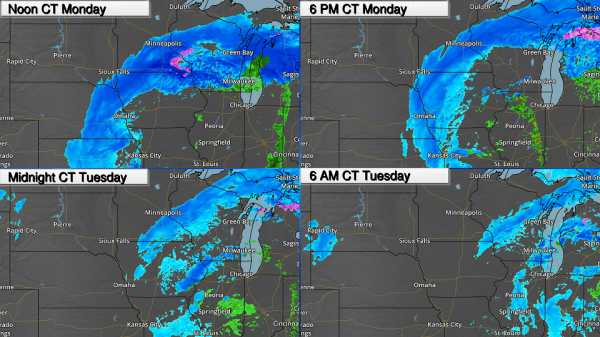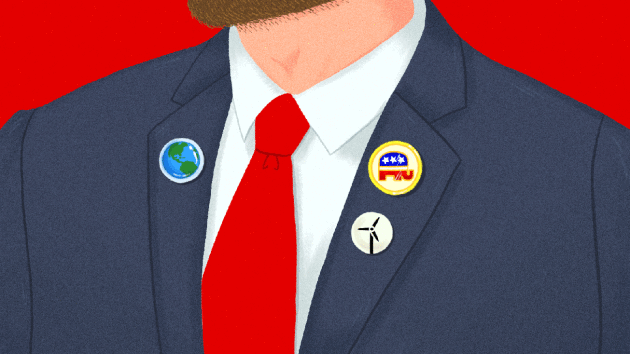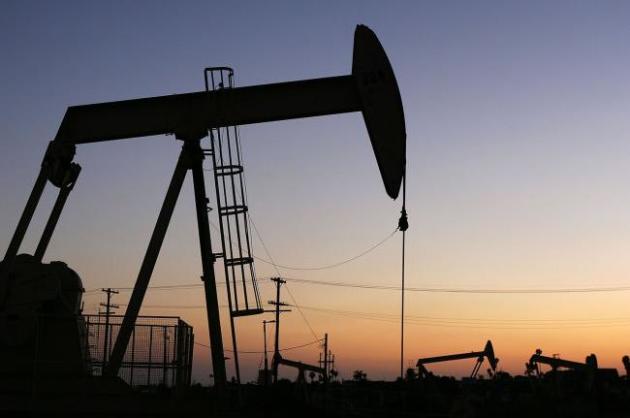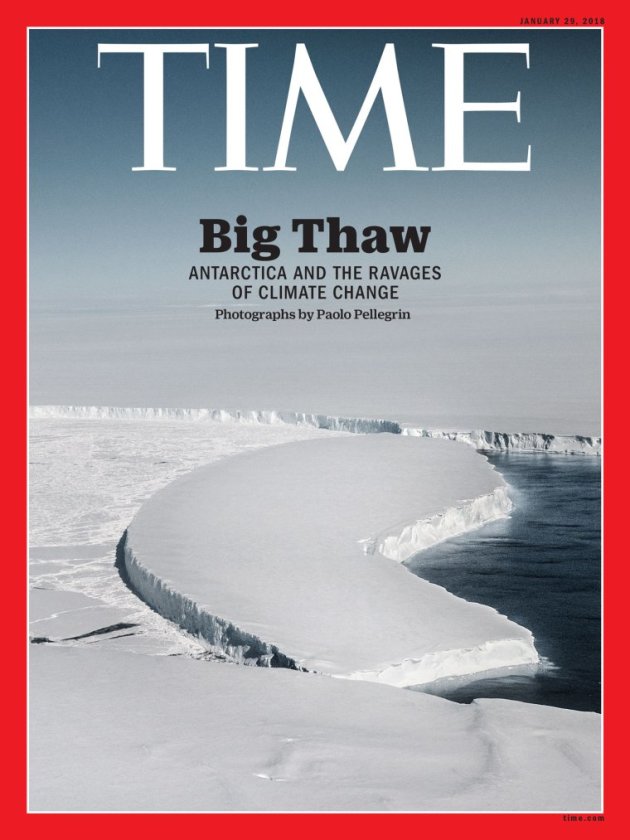Digging Out – Late Week Thaw – Numbing Super Bowl?
OK, we’re batting .500. The Vikings loss still stings, but the MSP metro snow curse has been vanquished! Turns out it CAN snow in the Twin Cities after all. I find that vaguely reassuring. Sure, it gums up the airport and complicates commutes, but heavy snow has a habit of bringing out our inner child, which is a good thing. Don’t get too stressed about the things you can’t change right?
Much of southern Minnesota is clawing out from over a foot of snow, with 3 foot drifts, while folks living northwest of Rogers are staring out at brown lawns, wondering what all the fuss is about? A sharp snowfall gradient did set up right over the Twin Cities. Get out and romp around in the snow today, because the mercury tops 40F by Friday; another slushy thaw by the middle of next week.
No more big, beefy storms are brewing, but long-range NOAA guidance suggests another blast of arctic air just in time for Super Bowl Sunday. It’s early for specifics, but highs in single digits or teens and lows below 0F are possible late Sunday night, February 4. That’s more of a WAG, a prayer, than a prediction this far out.
It’s just our way of personally thanking all those kind, considerate Eagles fans.
Snowfall Totals. Over a foot of snow over the southern suburbs, but as of late last night Owatonna was in the pole position for the coveted Golden Snow Shovel Award, with a cool 17″ of snow. Wow. Check out the latest amounts here, courtesy of NOAA.
Text Snowfall Reports, courtesy of the Twin Cities National Weather Service, are here.
The Last Time. Thanks to meteorologist Cody Matz at Fox 9 for refreshing my senior memory. Yesterday’s snowfall was the most from a storm in nearly 2 years, and for some southern suburbs the most in nearly 7 years. This is for multi-day snow events.
Single-Day Snowfall Amounts. If we somehow picked up over 10.5″ at MSP International (doubtful) on Monday it would be the most snow in a single calendar day since December 9, 2012.
Mushy Snow by Friday – Super Bowl Cool Down? Here is European forecast data for the Twin Cities. No extended thaws, but the snow in your yard may get a little sloppy by late week. ECMWF guidance hints at mid-teens for highs on Super Bowl Sunday. Source: WeatherBell.
Another Puff from the Arctic? Long-range GFS model data shows another surge of numbing air coming south in about 2 weeks, with the core of the coldest air probably coming 1-2 days after the Big Game. I doubt it will be as cold as late December and early January, but possibly chilly enough to get your attention.
On-Again, Off-Again Super Bowl Slush. GFS guidance hints at a few inches of slushy snow for that big football game coming up in less than 2 weeks, but this far out it’s more of a prayer than a prediction. Man, I hope all those super-polite Eagles fans arrive dressed for the elements.

Praedictix Briefing: Issued Monday, January 22nd, 2018:
* Heavy snow is falling from Wisconsin to Kansas this morning, with 6-12” of snow already reported across parts of Kansas and Nebraska. Parts of I-70 in Colorado and Kansas and I-80 in Nebraska are closed due to snow, blowing snow and accidents.
* Snow will continue to spread across the upper Midwest throughout the day, with overall snow totals of 6-18” expected in a band from northeastern Nebraska into western Wisconsin and the Upper Peninsula of Michigan.
* This snow will be accompanied by strong winds, in some cases gusting over 40 mph. This will cause reduced visibility across the upper Midwest as well as blowing and drifting snow. The worst winds that will cause low visibilities are expected from western Kansas into southern Minnesota, where Blizzard Warnings are in effect.

Monday Morning Radar. Snow is falling from Kansas to western Wisconsin this morning, with snow starting to work its way into the Twin Cities metro as of 8 AM. North Platte, NE, has already reported 10.3” as of 3 AM with drifts to three feet. Drifts to three feet were also reported near St. Francis, KS, with 11” of snow on the ground. Due to the heavy snow, eastbound I-80 between Big Springs and Brule in Nebraska was closed this morning (due to numerous accidents) as well as parts of I-70 in Colorado and Kansas. Due to low visibility, plows have been pulled in Dickinson County, IA.
Local Department of Transportation Websites:
Colorado: http://www.cotrip.org/map.htm
Kansas: http://www.kandrive.org/kandrive
Nebraska: https://hb.511.nebraska.gov
Iowa: https://hb.511ia.org/
South Dakota: https://www.safetravelusa.com/sd/
Minnesota: https://hb.511mn.org
Wisconsin: https://511wi.gov/

Warnings And Advisories. Blizzard Warnings continue to be in effect due to the potential of whiteout conditions with blowing and drifting snow from western Kansas to southern Minnesota. Blizzard Warnings mean that blizzard conditions (visibilities of ¼ miles or less and winds in excess of 35 mph for at least three hours) are likely, which will cause reduced visibilities and hazardous travel. Overall snow totals of 6-18” are expected across the Blizzard Warning area.
Winter Storm Warnings and Winter Weather Advisories are also in effect along the overall path of this system. In the Winter Weather Advisory areas, snow totals of 1-6” are generally expected, with the potential of 6-12”+ of snow across Winter Storm Warning areas. This snow will cause travel issues across the region, and with strong winds expected there will be areas of reduced visibility with blowing and drifting snow.

Additional Snow Forecast. The heaviest snow today is expected to fall from northeastern Nebraska to western Wisconsin, with snow totals of 6-12” expected. Snow totals will be highest from northeastern Nebraska to southern Minnesota, with some isolated amounts of up to 18” expected. This will cause major travel issues across the region through the day with low visibilities due to falling and blowing snow. Snow will move into Marquette later today, lasting into Tuesday, with the potential of 6-12″ of snow across the Upper Peninsula of Michigan. Map credit: Praedictix and AerisWeather.

Twin Cities Expected Snow. A tight snow gradient (likely even tighter than shown) is expected to set up across the Twin Cities metro Monday, with potentially 15-30 miles being the difference between only a couple inches of snow and over a half a foot. The lighter snow totals are expected to fall across the northwest metro, with heavier totals the further you head southeast across the metro. Heavy snow throughout today will cause a treacherous evening commute, especially across the south and east metro roads.

Snow Moves Across The Upper Midwest. Snow will continue from Kansas to Wisconsin throughout Monday, slowly moving east and tapering off Monday Night into Tuesday across the region. Timing out some of the heaviest snow:
- Twin Cities: 9 am to 6 pm today
- Omaha: 1 pm to 6 pm today
- Marquette: 1 pm today to 7 am Tuesday

Winds To Create Whiteout Conditions. Due to strong gusty winds of at least 30-40 mph, whiteout conditions are expected with the falling snow in the upper Midwest, especially across areas under the Blizzard Warning.
Summary: Heavy snow will continue to fall across the upper Midwest today, with a band of 6-18” of snow expected from northeastern Nebraska to western Wisconsin. This heavy snow alone would cause dangerous travel conditions across the region. Those travel conditions will be made worse by winds that are expected to gust between at least 30-40 mph, which will cause whiteout and blizzard conditions. The best probabilities of blizzard conditions are from western Kansas to southern Minnesota where Blizzard Warnings are in effect. Already this morning, parts of I-70 in Colorado and Kansas and I-80 in Nebraska are closed due to snow, blowing snow and accidents.
Billion Dollar Weather and Climate Disasters in 2017. Here’s a summary from NOAA: “In 2017, there were 16 weather and climate disaster events with losses exceeding $1 billion each across the United States. These events included 1 drought event, 2 flooding events, 1 freeze event, 8 severe storm events, 3 tropical cyclone events, and 1 wildfire event. Overall, these events resulted in the deaths of 362 people and had significant economic effects on the areas impacted. The 1980–2017 annual average is 5.8 events (CPI-adjusted); the annual average for the most recent 5 years (2013–2017) is 11.6 events (CPI-adjusted).During 2017, the U.S. experienced a historic year of weather and climate disasters. In total, the U.S. was impacted by 16 separate billion-dollar disaster events tying 2011 for the record number of billion-dollar disasters for an entire calendar year. In fact, 2017 arguably has more events than 2011 given that our analysis traditionally counts all U.S. billion-dollar wildfires, as regional-scale, seasonal events, not as multiple isolated events.
More notable than the high frequency of these events is the cumulative cost, which exceeds $300 billion in 2017 — a new U.S. annual record. The cumulative damage of these 16 U.S. events during 2017 is $306.2 billion, which shatters the previous U.S. annual record cost of $214.8 billion (CPI-adjusted), established in 2005 due to the impacts of Hurricanes Dennis, Katrina, Rita and Wilma.
The U.S. has sustained 219 weather and climate disasters since 1980 where overall damages/costs reached or exceeded $1 billion (including CPI adjustment to 2017). The total cost of these 219 events exceeds $1.5 trillion. This total now includes the initial cost estimates for Hurricanes Harvey, Irma and Maria…”

HURRICANES: Headlines and links from Climate Nexus: “Puerto Rico still struggling four months after Hurricane Maria (NBC), how this small Houston community survived Hurricane Harvey when other parts didn’t (USA Today), a Fort Bend engineer’s warning, 25 years old, comes true during Harvey (Houston Chronicle), corps pitches unprecedented watershed study after Harvey (Houston Chronicle), prospects for Houston flood control projects uncertain amid Washington politics (Houston Chronicle), Puerto Rico, Trump administration spar over hurricane disaster loan.” (Politico Pro $)
After Hurricane, Islanders Fear Their Cherished Lifestyle May Be Lost Forever. Here’s a clip from a story at The Washington Post: “…Months after Hurricane Irma blazed its destructive path through the Caribbean, the once vibrant community on the tiny island of Barbuda is still struggling to rebuild paradise lost. Before the September storm, Barbuda was a nearly forgotten Eden about the physical size of the District of Columbia. Its 1,700 inhabitants were family, literally. The descendants of African slaves brought centuries ago by the British, many islanders were related. The workdays were short, and the lobster was sweet. There were no street addresses. Everyone went by their first names. Irma’s Category 5 winds damaged virtually 100 percent of the island. In its aftermath, and as Hurricane Jose threatened to hit, the island was evacuated. A few hundred Barbudans have since returned, seeking to rebuild...”
File image of Hurricane Irma on September 5, 2017: AerisWeather.

Data Shows Solar Energy Really Is a Leading American Job Creator. Here’s an excerpt of an Op-Ed from The Solar Foundation at TheHill: “The rapid expansion of solar energy over the past few years has created hundreds of thousands of well-paying American jobs. The most recent National Solar Jobs Census published by The Solar Foundation, a nonprofit organization I lead, found there were 260,077 solar workers in the United States as of 2016. That year, one in 50 new U.S. jobs were in solar, and the industry added jobs 17 times faster than the overall economy. As the industry wait for a decision on solar panel tariffs, some critics questioned the accuracy of this jobs data…”
The Potential Pitfalls of Electric Cars – in 5 Charts. Yes, I drive an electric car, but I’m trying to keep my eyes wide open to the upsides and downsides. Here’s an excerpt from WIRED.com: “…Even if we switch the entire global energy supply to renewables, we’re going to have to mine a lot more cobalt, lithium, and other raw ingredients to create all those batteries—and do so sustainably and responsibly. For example, more than 60 percent of the world’s cobalt—a key ingredient for lithium-ion battery electrodes—comes from the Democratic Republic of Congo, where human rights abuses are rampant. Researchers are working on new batteries that require fewer problematic ingredients, and the countries proposing the bans will ideally follow through with commitments to renewable energy...”
Forget the Midwest. Minnesota Casts Itself as the North. In case you missed the article at The Wall Street Journal: “A growing movement in Minnesota aims to break free of its Midwest roots and embrace its bone-chilling winters with a new identity: the North. Seeking to conjure up images of competitive winter sports, icy lakes and snuggling in front of a toasty fire, these northern evangelists are ready for their moment in the sun when Super Bowl LII comes to Minneapolis on Feb. 4. Minnesotans are “sick of being this afterthought in this afterthought called the Midwest. We’re the star of the North and no one else can offer that,” said R.T. Rybak, who served as mayor of Minneapolis from 2002 until 2014. The state is using the North to tackle an economic challenge: historically low unemployment and sluggish population growth. Employers complain that they can’t find the workers they need to fill jobs…”
Photo credit: “A mural in St. Paul, Minn., is part of a planned rejuvenation of the city’s downtown.” Photo: David Joles/Minneapolis Star Tribune/ZUMA PRESS.
Chickens Prefer Attractive People. My favorite headline this week, courtesy of National Geographic. Here are a couple of excerpts – who knew? “…For instance, chickens can recognize up to 30 other individual chickens, and chicks imprint the image of their mother between 24 to 36 hours of hatching…Not only that, the birds can recognize and discern people based on their faces. And they apparently like beautiful humans. A 2002 paper found that chickens have the same preference for certain human faces as do humans, “keying in on things like symmetry” in features—one of the subconscious measures of attractiveness, Blatchford says…The study is limited in that it only tested a small number of chickens and humans. But the results may suggest the mutual admiration for symmetry is rooted in the nervous system, and not necessarily due to cultural influences…”
Photo credit: “A red junglefowl roams India’s Kanha Tiger Reserve. Domesticated chickens evolved from this species about 8,000 years ago.” Photo by Roy Toft, National Geographic Creative.
9.3″ snow fell at MSP International Airport on Monday.
35 F. maximum temperature yesterday.
24 F. average high on January 22.
40 F. high on January 22, 2017.
January 23, 1963: A record low of -31 is set at the Minneapolis-St. Paul International Airport.
TODAY: Peeks of sun, digging out. Winds: NW 7-12. High: 26
TUESDAY NIGHT: Partly cloudy. Low: 12
WEDNESDAY: Intervals of sun, a bit milder. Winds: SW 3-8. High: 29
THURSDAY: Patchy clouds, thawing out late. Winds: SE 8-13. Wake-up: 15. High: 33
FRIDAY: Mostly cloudy, breezy and mild. Winds: SW 10-20. Wake-up: 29. High: 42
SATURDAY: Mix of clouds and sun, cooler. Winds: NW 7-12. Wake-up: 25. High: 30
SUNDAY: Partly sunny, seasonably chilly. Winds: NW 5-10. Wake-up: 15. High: 22
MONDAY: Sunny start, clouds increase late. Winds: S 5-10. Wake-up: 11. High: 27
Climate Stories…

Seeing Red on Climate. Republicans stepping up and talking about climate risk? It’s happening, as reported at Grist: “…There’s a small but growing alliance of concerned conservatives who want to reclaim climate change as a nonpartisan issue. This motley crew of lobbyists, Evangelical Christians, and far-right radicals call themselves the “eco-right.” Christine Todd Whitman, former chief of the Environmental Protection Agency under President George W. Bush, believes the eco-right has a real chance at inspiring action in Congress. With Republicans controlling both houses of Congress and the White House, and a record-breaking year of environmental disasters finally behind us, 2018 could be the year the party reverses course. “If you look at the damage from just this last summer, from the floods, the droughts, the fires, it’s pushing $300 billion out of our economy,” Whitman said…”

Big Oil, Climate Change and the Law. A story at Financial Times provides some perspective; here’s an excerpt: “…Legal campaigns will not stop climate change. That is down to the scientists and engineers who must find low-cost, low-carbon sources of supply to meet the needs of 8bn and then 9bn people globally. In public, the oil majors dismiss what they see as political theatre, but there is growing concern that scientific work linking hydrocarbons to climate change and climate change to extreme weather could produce judgments against the industry as a whole and perhaps individual groups. The companies do not believe that point has yet been reached. For now, the legal actions add a further dimension to the pressure for change in an industry that has begun to accept the need to reinvent itself.”
The Flawed Climate Gambit Against Big Oil. Axios has a worthy read; here’s a clip: “New York City and several California municipalities are suing big oil companies, alleging they concealed what they knew about climate change and are liable for billions of dollars of damage caused by rising global temperatures. Why that’s flawed: The strategy is based on the 1990s lawsuits against tobacco companies, which found they concealed and misrepresented what they knew about the health effects of cigarettes. But climate change is a global problem we’re all collectively causing by burning products owned by fossil-fuel companies. What’s more, the legal roots of these claims today are untested and unlikely to succeed, lawyers supportive of the effort say…”
Illustration credit: Rebecca Zisser / Axios.

The Great Crack-Up. It’s the cover story at TIME.com: “…While the disappearance of Arctic sea ice is enough of an environmental calamity, it’s the ice that covers Antarctica that is a bigger real menace. As it melts and sloughs off the land, it raises sea levels worldwide. According to one 2017 study, if greenhouse-gas emissions continue at their current rate, low-lying areas around the world could by deluged by up to 4 ft. of sea-level increase before the end of the century. A more-recent study suggests that increased snowfall on the eastern end of Antarctica—another result of climate change—may offset that a bit, restoring some of what’s lost, but the snow is likely only to slow sea-level rise, not stop it. NASA has long employed satellites to monitor weather and climate from space; from 2003 to 2010, the ICESat satellite circled the Earth in a north-south orbit, keeping an eye on the poles…”
Trump and the Military Are At Odds on Climate Change. Pacific Standard explains: “...When Trump’s national security strategy—announced in January—erased climate change as a threat to U.S. security, that decision drew the ire of a bipartisan group of congressional legislators. As a result of this dichotomy, the DOD has emerged as an unlikely champion of climate action in the Trump government, with the Pentagon declaring emphatically that a rapidly warming world is bringing with it alarming security risks ranging from rising sea level (which threatens naval bases such as Norfolk, Virginia, the largest in the world), to the “mother of all risks“—unpredictable and worsening political instability around the globe brought by climate chaos…”
Concern Over Climate Change Linked to Depression, Anxiety: Study. Reuters has the story: “Depression and anxiety afflict Americans who are concerned with the fate of the environment, according to a study of the mental health effects of climate change. Most hard-hit are women and people with low incomes who worry about the planet’s long-term health, said the study published this week in the journal Global Environmental Change. Symptoms include restless nights, feelings of loneliness and lethargy. “Climate change is a persistent global stressor,” said Sabrina Helm, lead author of the paper and professor of family and consumer sciences at the University of Arizona. Risks to mental health from climate change are a “creeping development,” she told the Thomson Reuters Foundation…”
File image: NASA.
2017 Was Among the Planet’s Hottest Years on Record, NASA and NOAA Scientists Report. Chris Mooney reports for The Washington Post: “2017 was among the hottest years ever recorded, government scientists reported Thursday. The year was the second-hottest in recorded history, NASA said, while scientists from the National Oceanic and Atmospheric Administration reported 2017 was the third-warmest they’ve ever recorded. “The planet is warming remarkably uniformly,” said Gavin Schmidt, director of NASA’s Goddard Institute for Space Studies, on a press call to share the results with reporters. The two government agencies use different methodologies to calculate global temperatures, but by either standard, the 2017 results make the past four years the hottest period in their 138-year archive…”



